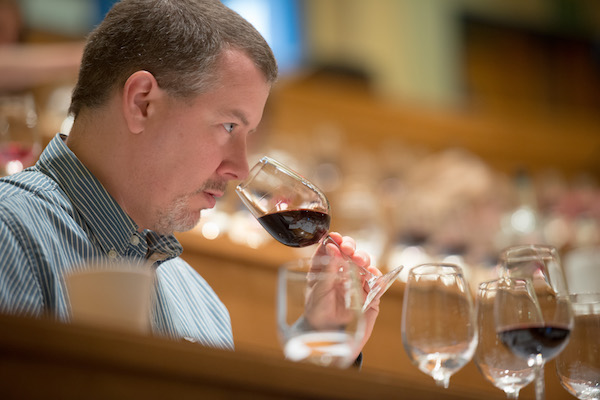
SEATTLE – Famed British author Hugh Johnson celebrates the 40th anniversary of his Pocket Wine Book next month, but this 2017 edition marks the first for Seattle’s Sean Sullivan as one of his correspondents.
However, the opportunity to share his insight and opinions on the wine industries of Washington, Oregon and Idaho for a guide with 12 million copies sold worldwide is one Sullivan hoped would have come under much different circumstances.
“One of the things that interested me the most about this assignment is that Cole Danehower had done this before me,” Sullivan told Great Northwest Wine. “Cole and I had always talked about working together on something over the years. It’s always been a real regret of mine that we had never been able to do that.”
Danehower, one of the Pacific Northwest’s most respected wine writers, died Aug. 21, 2015 at the age of 61 after a brief battle with cancer. The 2016 edition that Danehower contributed to, which extended the James Beard Award winner’s string of work on behalf of Johnson, had not hit bookshelves yet.
“I had literally just gotten out of the hospital after my stroke when I learned he died,” Sullivan said. “I cried my heart out at the news.”
Pocket Wine Book release set for Sept. 6

Sullivan’s debut contribution to Johnson’s Pocket Wine Book for 2017 is scheduled to be published Sept. 6.
“When they reached out to me, the idea of picking up something that Cole had done before heightened my interest,” Sullivan said.
Johnson lists 30 wine experts, nine of them Masters of Wine, from across the globe among his acknowledgements. Canadian critic Anthony Gismondi continues to handle the British Columbia coverage.
“It’s a fun project and an influential one,” Sullivan said. “They told me early on they look for long-term relationships with the people they work with, so that was definitely appealing to me.
“I think it’s meant generally for consumers and what they might see on the shelves or see on restaurant lists, so the format as a pocket guide allows you to take it with you, thumb through the references in the guide and see where that winery and that wine falls,” Sullivan described.
Scouting notebook approach to wine
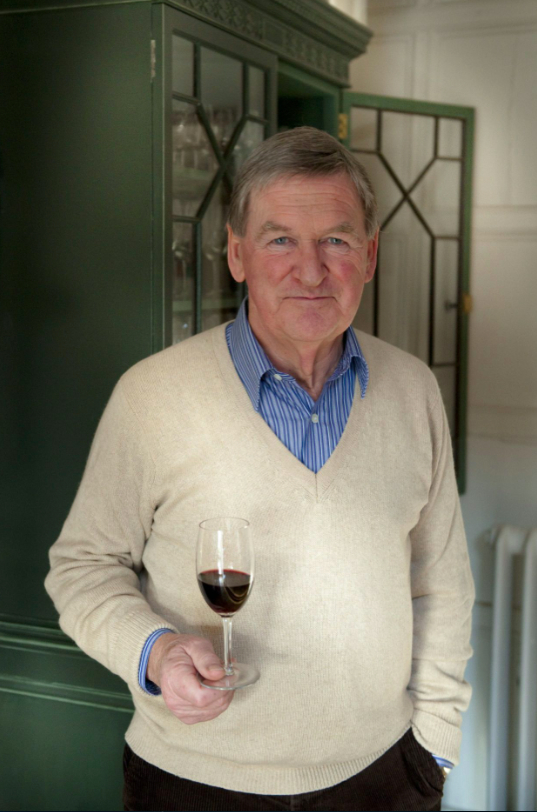
Each year, the hard-bound Pocket Wine Book squeezes a staggering amount of international information within its 336 pages, and the page count holds firm. As a result, Johnson and his editorial team have created their own dialect of abbreviations, particularly within the descriptions of the featured wineries. B’x stands for Bordeaux blend, while v.gd means very good and Col V should be interpreted as Columbia Valley. Those are among the concessions the decorated Decanter columnist adopted to ensure his guide fits in a glove box.
“Part of the challenge working on the project in that time frame was working within the web of bizarre abbreviations and expressions they use and cross-referencing those so that the editing work they were doing on top of my work was minimal,” Sullivan said.
Learning that language and the tight deadline came just as Sullivan was learning how to adjust with left sided homonymous hemianopsia, a vision loss he suffered as a result of his Aug. 18, 2015, stroke.
“It was Oct. 6 when I received my first contact with them, and they wanted the information back to them in less than a month’s time,” Sullivan said. “For a freelance project that’s part of an influential book, that’s not much time.”
Johnson’s editors created some guidance that will continue to play out in the years to come, Sullivan said.
“They want a certain percentage of the content updated each year, but not have it completely revised every year,” Sullivan said. “I’ll be able to make it more of my own and in my own voice a little bit each year.”
One defining quality Sullivan said he’s looking for is “buzzworthy.”
“They basically want to hear about the wineries and the wines that should be most important to their readers,” he said. “There are some wineries doing some very exciting things, but if they don’t yet have a national or international presence, then maybe they don’t get included yet because they are still too small or don’t have the distribution this book would look for.
“And there is the canon of wineries that everyone agrees upon should be included in a book like this,” Sullivan said.
Rising stars include Andrew Will, Avennia
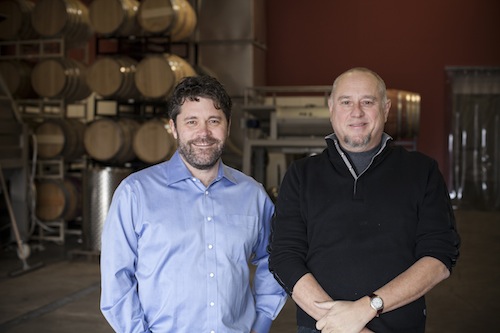
Space is at a premium and static in this book, which explains why there are just 39 wineries listed from Washington, the second-largest wine-producing state in the United States. Oregon, however, earned two more recommendations with 41 entries.
“We know and agree which wineries have the excellent reputation, but we also want to point out what are the next up-and-coming, exciting things that you will want,” Sullivan said.
Top wineries from Washington, those that carried over their four stars from last year, are Betz, Cayuse, Col Solare, DeLille, Leonetti and Quilceda Creek. New four-star wineries are Andrew Will and Reynvaan Family Vineyards. They were upgraded from the three stars awarded by Danehower for the 2016 edition.
“Both are certainly deserving,” Sullivan said.
A number of wineries, particularly in Washington, will be disappointed by their ratings in the 2017 Pocket Wine Book. Sullivan readily admits, “I’m probably a bit of a tougher rater than Cole was.”
However, Johnson’s editors also told Sullivan to reduce the number of four-star wineries in Washington.
“In particular, they looked back at last year and said in terms of percentage that Washington was over-represented in the four-star ratings compared with other regions in the world,” Sullivan said.
Instructions were to follow the Pocket Wine Book definitions of the stars and their reference to quality. Two stars indicate “above average,” while three stars should be limited to wineries “well known, highly reputed.” Four stars denotes a wine program that’s “grand, prestigious, expensive.”
Star falls at 8 Washington wineries
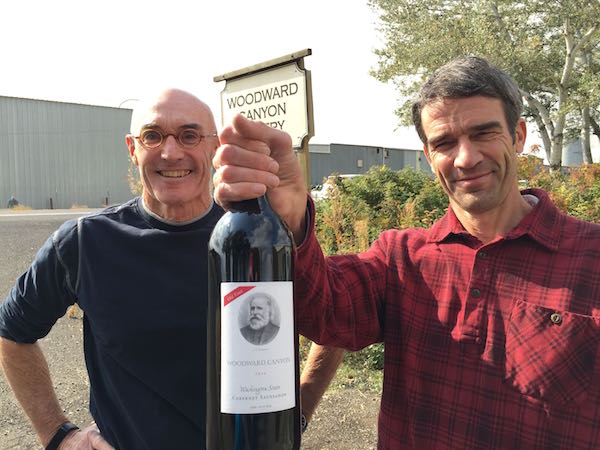
Among those that lost a star in the 2017 Pocket Wine Book are Chateau Ste. Michelle, Chinook, Gramercy, Hedges, Hogue, Long Shadows, Northstar, Pacific Rim and Woodward Canyon.
“I looked at each of those with four stars and asked myself if they were grand, prestigious and expensive,” Sullivan said. “And for those three-star wineries, were they really highly regarded? The distinction between those two is a pretty logical distinction to me.”
He included both Avennia and Force Majeure, awarding each three stars. To make room, Sullivan deleted Maryhill, which Danehower awarded three stars in the 2016 issue. In 2015, Maryhill was named the Pacific Northwest Winery of the Year by Wine Press Northwest magazine, in part because the prestigious San Francisco International Wine Competition selected Maryhill as its top winery of the judging in 2014. Last year, Waterbrook received two stars.
“I thought about Force Majeure and Avennia both getting a lot of buzz for their wines,” Sullivan said. “Sure, there is considerably less available in the market than either Maryhill or Waterbrook, but their distribution is growing, and the buzz factor was high enough to warrant inclusion.”
Oregon matches Washington at eight in terms of four-star ratings from Sullivan. Those are Antica Terra, Beaux Freres, Bergström, Domaine Drouhin-Oregon, Evening Land, The Eyrie Vineyards, Ponzi Vineyards and Soter. Elk Cove and Phelps Creek each lost a star.
The top winery in Idaho, according to Sullivan, is Coiled Wines with three stars.
“I think they are doing some really nice stuff,” he said.
Cinder fell from three to two stars, and the only other Idaho winery listed for 2017 is Ste. Chapelle (one star). Two wineries were deleted from the Idaho section – Koenig Vineyards, which merited three stars from Danehower last year, and Ste. Chapelle sister winery Sawtooth.
For the British Columbia section, no wineries received a four-star rating. Stag’s Hollow in Okanagan Falls earned a promotion to three stars, joining last year’s carryovers of Blue Mountain, CedarCreek, Mission Hill, Osoyoos Larose, Painted Rock, Road 13 and Tantalus. A total of 14 B.C. wineries made the book, trailing Ontario by three. However, Ontario is home to the only four-star winery in Canada – Bachelder in Niagara. Thomas Bachelder, a native of Quebec, also makes wines in Burgundy and Oregon.
Coping with new challenges
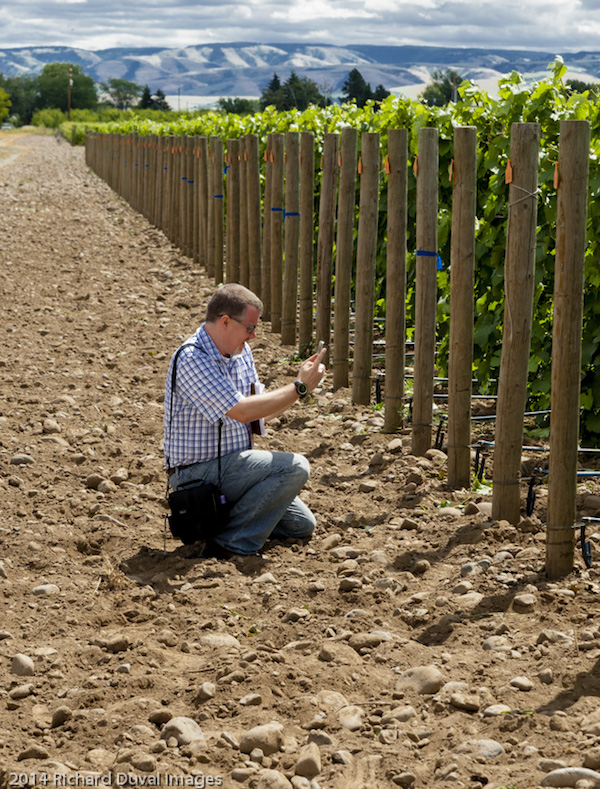
A year ago, Sullivan was on cloud nine. The avid mountain climber was almost 12 months into his new role as Wine Enthusiast’s Washington wine reviewer, and his longtime girlfriend Annie Hong said yes.
“I had my stroke one week after we got engaged,” Sullivan said.
The stroke stole a substantial portion of his eyesight, but he didn’t lose the girl. They were married July 17.
“I lost half of my vision with the stroke, and the biggest thing is that I can’t drive anymore,” Sullivan said. “That’s been a huge lifestyle shift, and even with all the transit, Seattle is very much a car city. Mercifully, I live in Seattle and work from home. It would be difficult if I worked in Bellevue.”
His adjustment to left sided homonymous hemianopsia is on-going and should not be confused with a loss of peripheral vision.
“This is a common misperception. In fact, it’s a blindness from the mid-line left in both eyes,” Sullivan described. “In essence, if you think of your visual field like a circle, mine is now cut in half where, if I am looking straight forward, I see nothing from the mid-line left in either eye. All of my vision is right sided.”
Between his loss of vision, the tight deadline and an editing database Sullivan politely described as “wonky,” there were a few things that slipped through into the final version of the book.
A sidebar with a theme of Walla Walla referred to the town as simply “Walla.” Milbrandt Vineyards was misspelled for the second straight edition. And Sullivan said Woodward Canyon should be listed as a four-star winery, not the three-star brand as it appears in the book.
“Early on after the stroke, editing was much harder,” Sullivan said. “There are still things that pop up, though, like going to a baseball game with my brother. I found out last summer that I no longer can sit along the baselines because my ability to track the flight of the ball is greatly reduced because of my vision, so I have to sit in center field or right center or left center to keep everything in front of me.
“And jaywalking is a thing of the past for me,” he added. “I have to turn my body all the way around. It’s a very strange sensation. And climbing upon an exposed section of rock or terrain and only being able to see half of what’s out there is unnerving, so this continues to be an adjustment.”
The tight deadline of last year, learning Johnson’s Pocket Book-ese and the compliments/complaints about ratings within the best-selling book all are topics Sullivan wishes he could bounce off Danehower.
“I would have loved to have had a chat with Cole about it and see what he thought,” Sullivan said. “We’d have some fun war stories to swap, I’m sure.”
Hugh Johnson’s 2017 Pocket Wine Book, published by Mitchell Beazley/Octopus Books USA, retails for $17. It’s available as an eBook through Amazon.com and also an app from the Apple Store. The app version allows for sharing on social media.

Leave a Reply